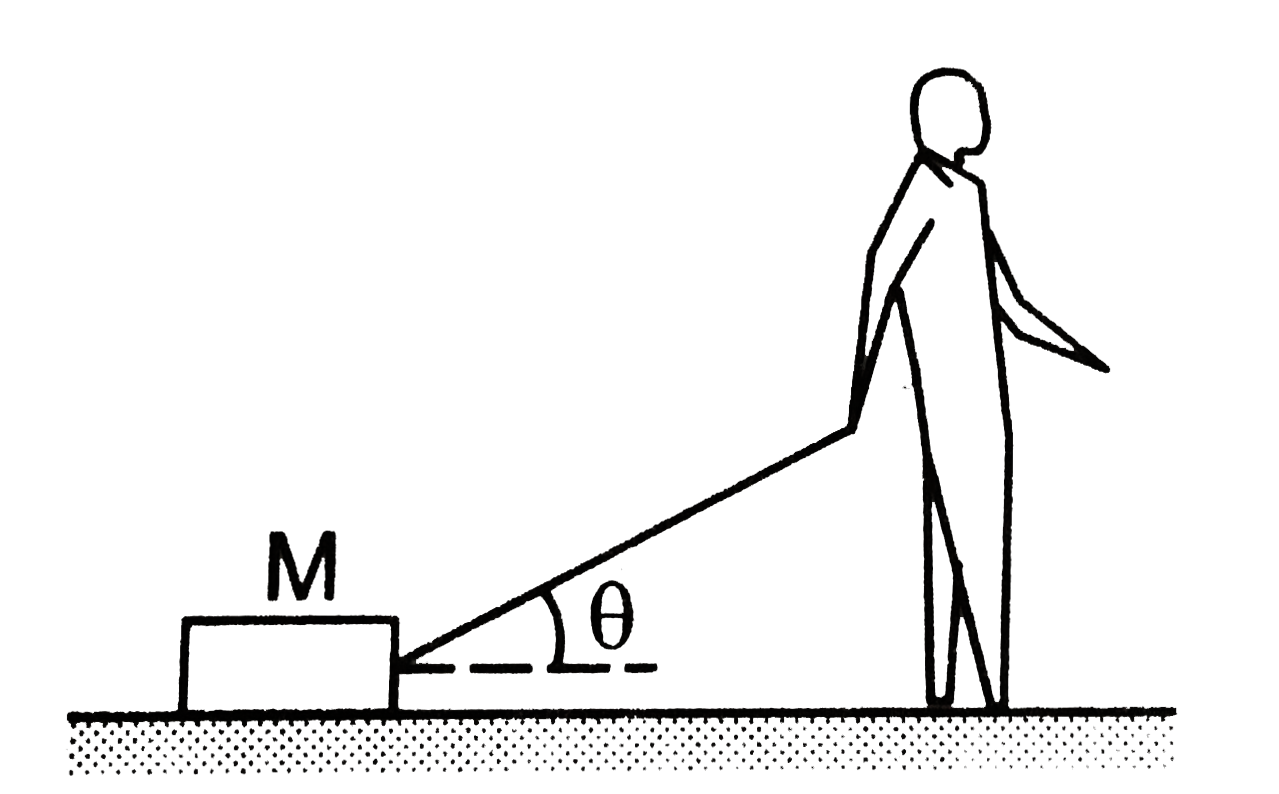A block of mass m slides m slides down a smooth incline of angle of inclination . The force acting on it are N (normal reaction). And mg (weight). The accelration of the block is . Two students analyze the situation and apply Newton a second law.
Only first student is correct
Only second student is correct
Both students are correct
Both students are wrong.
The correct Answer is:c
To solve the problem, we will analyze the forces acting on the block sliding down the incline and apply Newton's second law.
1. Identify the Forces Acting on the Block:
- The weight of the block, mg, acts vertically downward.
- The normal force, N, acts perpendicular to the surface of the incline.
2. Resolve the Weight into Components:
- The weight can be resolved into two components:
- Parallel to the incline: mgsinθ
- Perpendicular to the incline: mgcosθ
3. Apply Newton's Second Law in the Direction of the Incline:
- The net force acting on the block along the incline is mgsinθ.
- According to Newton's second law, this net force equals the mass times the acceleration of the block:
mgsinθ=mα
- This equation corresponds to the first student's analysis.
4. Apply Newton's Second Law Perpendicular to the Incline:
- The forces acting perpendicular to the incline are the normal force N and the perpendicular component of the weight mgcosθ.
- The net force in this direction must equal the mass times the vertical component of the acceleration:
mg−Ncosθ=mαsinθ
- This equation corresponds to the second student's analysis.
5. Conclusion:
- From the above analysis, both equations derived by the students are correct:
- First student's equation: mgsinθ=mα
- Second student's equation: mg−Ncosθ=mαsinθ
Final Result:
Both students are correct in their analyses.
---
- The weight of the block, mg, acts vertically downward.
- The normal force, N, acts perpendicular to the surface of the incline.
- The weight can be resolved into two components:
- Parallel to the incline: mgsinθ
- Perpendicular to the incline: mgcosθ
- The net force acting on the block along the incline is mgsinθ.
- According to Newton's second law, this net force equals the mass times the acceleration of the block:
mgsinθ=mα
- This equation corresponds to the first student's analysis.
- The forces acting perpendicular to the incline are the normal force N and the perpendicular component of the weight mgcosθ.
- The net force in this direction must equal the mass times the vertical component of the acceleration:
mg−Ncosθ=mαsinθ
- This equation corresponds to the second student's analysis.
- From the above analysis, both equations derived by the students are correct:
- First student's equation: mgsinθ=mα
- Second student's equation: mg−Ncosθ=mαsinθ
Both students are correct in their analyses.
Similar Questions
A block of mass m is placed on a smooth inclined plane of inclination θ with the horizontal. The force exerted by the plane on the block has a magnitude
View SolutionA block of mass m is placed on a smooth inclined plane of inclination θ with the horizontal. The force exerted by the plane on the block has a magnitude
View SolutionA cubical block of mass M and edge a slides down a rougg inclined plane of inclination θ with a uniform velocity. The torque of the normal force on the block about its centre has magnitude.
View SolutionA cubical block of mass M and edge a slides down a rougg inclined plane of inclination θ with a uniform velocity. The torque of the normal force on the block about its centre has magnitude.
View SolutionA block of mass m slides down an inclined plane of inclination θ with uniform speed. The coefficient of friction between the block and the plane is μ. The contact force between the block and the plane is
View SolutionA block of mass M is pulled on a smooth horizontal table by a string making an angle θ with the horizontal as shown in figure. If the acceleration of the block is a, find the force applied by the string and by the table N on the block.
 View Solution
View SolutionStatement I: A block of mass m is placed on a smooth inclined plane of inclinaton θ with the horizontal. The force exerted by the plane on the block has a magnitude mgcosθ.
Statement II: Normal reaction always acts perpendicular to the contact surface.View SolutionA smooth block of mass m is held stationary on a smooth wedge of mass M and inclination θ as shown in figure .If the system is released from rest , then the normal reaction between the block and the wedge is
 View Solution
View SolutionA block of mass m slides down an inclined plane which makes an angle θ with the horizontal. The coefficient of friction between the block and the plane is μ. The force exerted by the block on the plane is
View SolutionA small block of mass m is kept on a rough inclined surface of inclination θ fixed in a car. The car moves with a uniform velocity v and the block does not slide on the wedge. The work done by the force of friction on the block in time t will be
_PHY_E05_250_Q01.png) View Solution
View Solution

